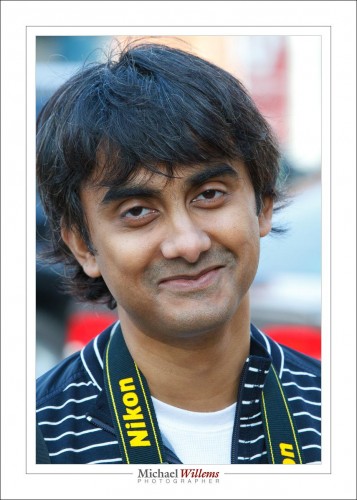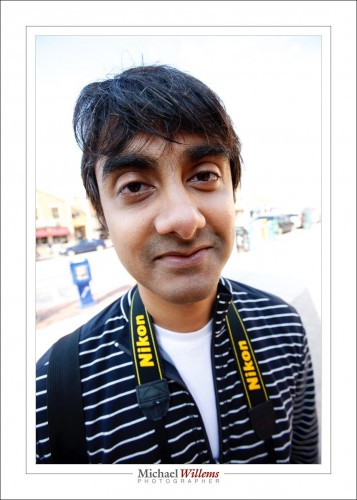So when I shoot portraits, my favourite lens, if I can use it, is the 70-200.
Why “if I can use it”?
Because it is long. That means I need a large studio to stand back a lot. And not every studio is large. In all probability, your kitchen isn’t large, and I bet you do portraits there sometimes.
OK… but why would I want that long lens in the first place?
Because then I get very little distortion. Here’s a student, a few years ago on an Oakville Photo Walk, from far away, with the 70-200mm lens:
That’s what he looked like.
But now let’s get closer. And closer. So we zoom out. Closer still. Wide angle. Closer still. Now we have a very wide angle lens (16-35), and we are very close:
Can you see that’s a very different (and distorted) person?
Sometimes, in an environmental portrait, you may want to get close to the second picture—though never that close, distortion is out. But generally speaking, if it’s a headshot, you want accuracy, and the farther back you stand, the more accurate the representation of the person is.
There is a second advantage to being far away: you are not “in their face”. That means you are not perceived as threatening and something to fear. Which in turn means your subject will relax more. Basic psychology.
Practice: 50mm (on a full frame) is the minimum for half body shots; 85mm (ditto) is the minimum for headshots; longer is better for neutral, accurate portraits.
Lesson learned: If you go wide, stand back. Because of course it’s not the lens that does this magic: it’s how far away you stand. The lens just facilitates that.


